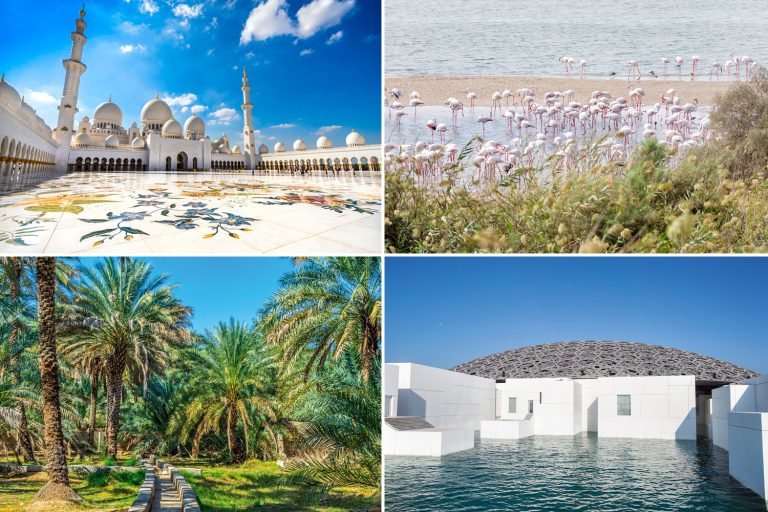Kansai Japan -A Cultural Hub with Endless Discoveries
The Kansai region is a vibrant and culturally rich area of Japan, sitting at the heart of the nation’s main island of Honshu. This region is famed for its modern cities, such as Osaka and Kobe, and its historic treasures, including Kyoto and Nara.
These ancient capitals resonate with the history of the entire country. Comprising several prefectures, Kansai offers visitors a chance to experience a unique blend of traditional Japanese culture and modern innovation.
You’ll discover that Kansai is not only the geographic centre of जापान but also offers a glimpse into the country’s soul. With landmarks like the iconic Fushimi Inari Shrine in Kyoto, the bustling streets of Osaka, and the serene temples in Nara, the Kansai region provides countless opportunities for exploration and learning.
Each city within Kansai showcases something different, from Kyoto’s well-preserved districts that take you back in time to Osaka’s dynamic food scene, which reflects its residents’ open and friendly nature.
The region is also known for events of historical and cultural significance, like the Gion Matsuri in Kyoto, one of the most famous festivals in Japan.
A visit to Kansai offers more than just sights to see; it provides numerous interactive experiences where you can enjoy hands-on activities such as tea ceremonies, traditional crafts, and cooking classes, ensuring you leave with meaningful and personal memories.
Cultural and Historical Significance
The Kansai region, a cornerstone of Japan’s cultural and historical past, beckons with a rich heritage spread across temples, natural landscapes, and bustling modern cities.
From time-honoured rituals to iconic landmarks, Kansai presents a vivid tapestry of Japan’s civilization.
धार्मिक विरासत
In Kansai, the spiritual essence of Japan is palpable at the numerous temples and Shinto shrines. The revered Ise Shrine exemplifies Shinto architecture and remains a primary pilgrimage site, encapsulating over two millennia of religious history.
Koya-san in Wakayama Prefecture is the heartland of Shingon Buddhism, inviting spiritual seekers to its hallowed grounds.
ऐतिहासिक स्थल
Kansai’s storied past is reflected in its historical landmarks. Magnificent structures like Himeji Castle stand as a tribute to the samurai era, while the ancient capitals of Nara और Sakurai reflect the Asuka period’s cultural zenith.
सांस्कृतिक परिदृश्य
The cultural landscape of Kansai is a mosaic of traditional and modern elements. The preservation of arts such as the tea ceremony, geisha, kabuki, bunraku, और noh theatre coexist with contemporary expressions like the bustling नाइटलाइफ़ का Osaka.
Modern Cultural Expressions
Modern Kansai thrives with innovation while cherishing its legacy. Here, you can savour culinary delights, like takoyaki और Kobe beef, or participate in the vivid pop culture scenes that manifest in everything from fashion to music.
यूनेस्को विश्व धरोहर स्थल
The region boasts an array of यूनेस्को विश्व धरोहर स्थल, शामिल Himeji Castle और Mount Koya, which testify to Kansai’s global cultural significance.
Traditional Regions and Historical Provinces
Historically, Kansai encompassed several provinces, जैसे कि Kinai और Kii Peninsula, which were central in the development of Japan. Today, these areas serve as repositories of the Japanese cultural identity.
Festivals and Pilgrimages
Festivals and pilgrimages are the pulse of Kansai’s rhythm. The Kumano Kodo pilgrimage trails and the festive celebrations in cities from Tokushima को Kinosaki are colourful expressions of a culture steeped in tradition.
भूगोल और प्रकृति
The Kansai Region, also known as the Kinki Region, is a tapestry of natural landscapes, diverse wildlife, and rejuvenating hot springs. You’ll find everything from the bustling Osaka Plain to the serene shores of Lake Biwa, Japan’s largest freshwater lake.
Natural Landscapes
The Kansai Region is a part of Honshu, Japan’s main island, and boasts various geographical features. The Sea of Japan lies to the north, while to the south, the Pacific Ocean’s waves kiss the shore.
Connecting to the Pacific is the Seto Inland Sea, which offers stunning views as it envelopes parts of the region. Amanohashidate, sometimes called the bridge to heaven, provides an iconic avenue of pine trees that divides Miyazu Bay, offering one of Japan’s most enchanting vistas.
Shiga Prefecture houses Lake Biwa, the country’s largest freshwater lake, and represents a critical ecological zone with abundant wildlife. Mie Prefecture is noted for the Kumano region, a mountainous area with deep spiritual significance and part of the UNESCO-recognized Kii Mountain Range.
Awaji Island, positioned between Honshu and Shikoku, adds to the area’s natural beauty with its coasts, parks, and gardens — ideal for outdoor enthusiasts.
वनस्पति और जीव
Rich in biodiversity, the region is home to a multitude of species. Most notable are the cherry blossoms या sakura, which create a stunning spectacle each spring.
The region’s national parks also preserve habitats for a wide array of wildlife, fostering a unique ecological environment for exploration.
- Chubu Sangaku National Park: This park is located partly in the region’s limits and conserves mountainous habitats.
- Yoshino-Kumano National Park: Encompasses forested mountains and offers sanctuary to various woodland creatures.
Shikoku और Chugoku regions, while not within Kansai, are close enough to influence its biodiversity, mainly through migratory patterns and shared ecosystems.
Hot Springs and Resorts
The tradition of onsen, or hot springs, is alive and well in the Kansai Region. These natural springs provide a glimpse into the volcanic activity beneath the surface, and the minerals found in these waters are thought to offer health benefits.
- Hot Spring Resort: The region has numerous resorts offering complete services for rest and rejuvenation.
- Onsen Towns: Scattered throughout, such as those near Lake Biwa, they provide authentic Japanese relaxation experiences.
The Kansai Region offers an escape into nature, whether you’re exploring its natural parks, appreciating its flora and fauna, or unwinding in its famed hot springs and resorts.
Each transition from mountains to coast, forests to plains, brings new discoveries and distinctly Kansai experiences.






